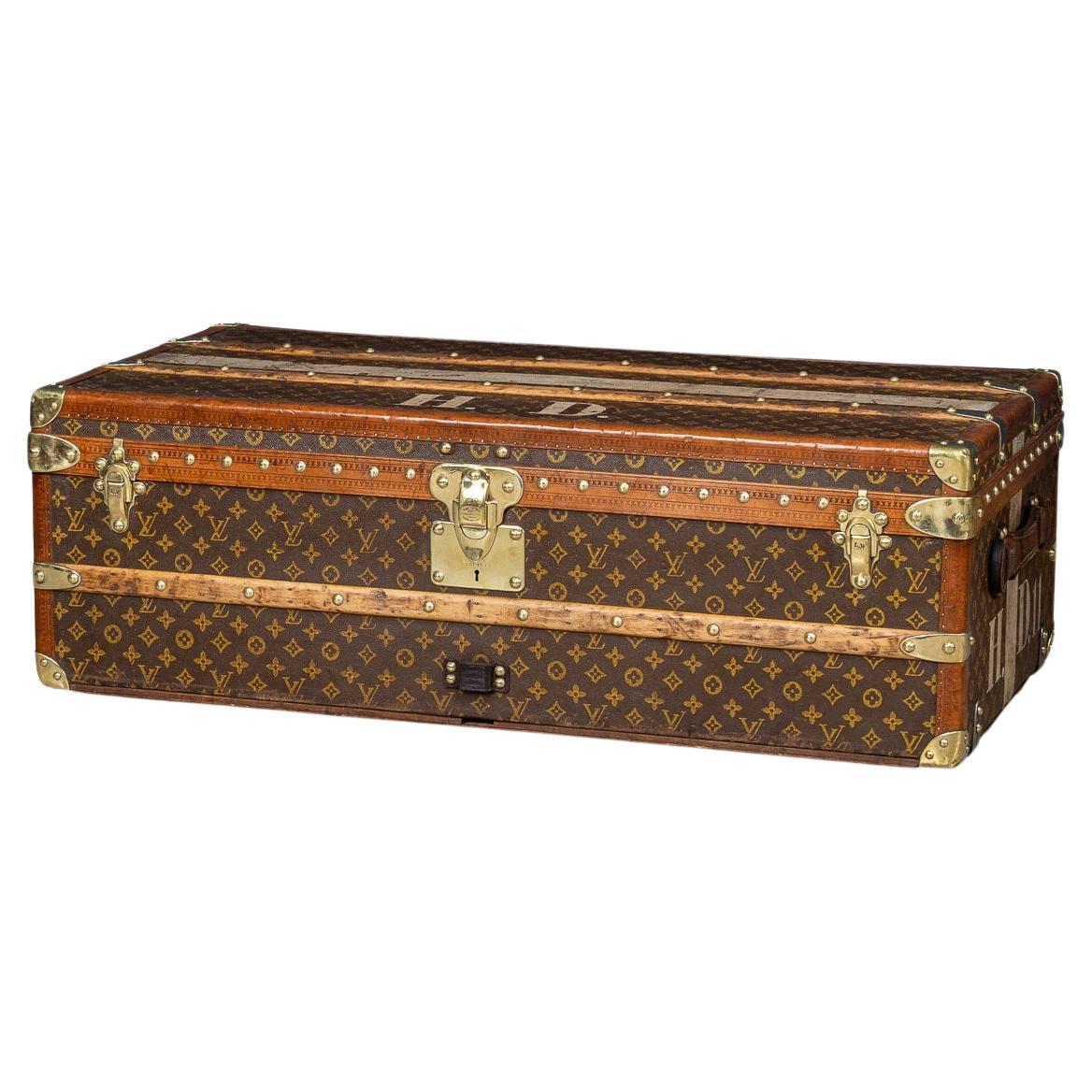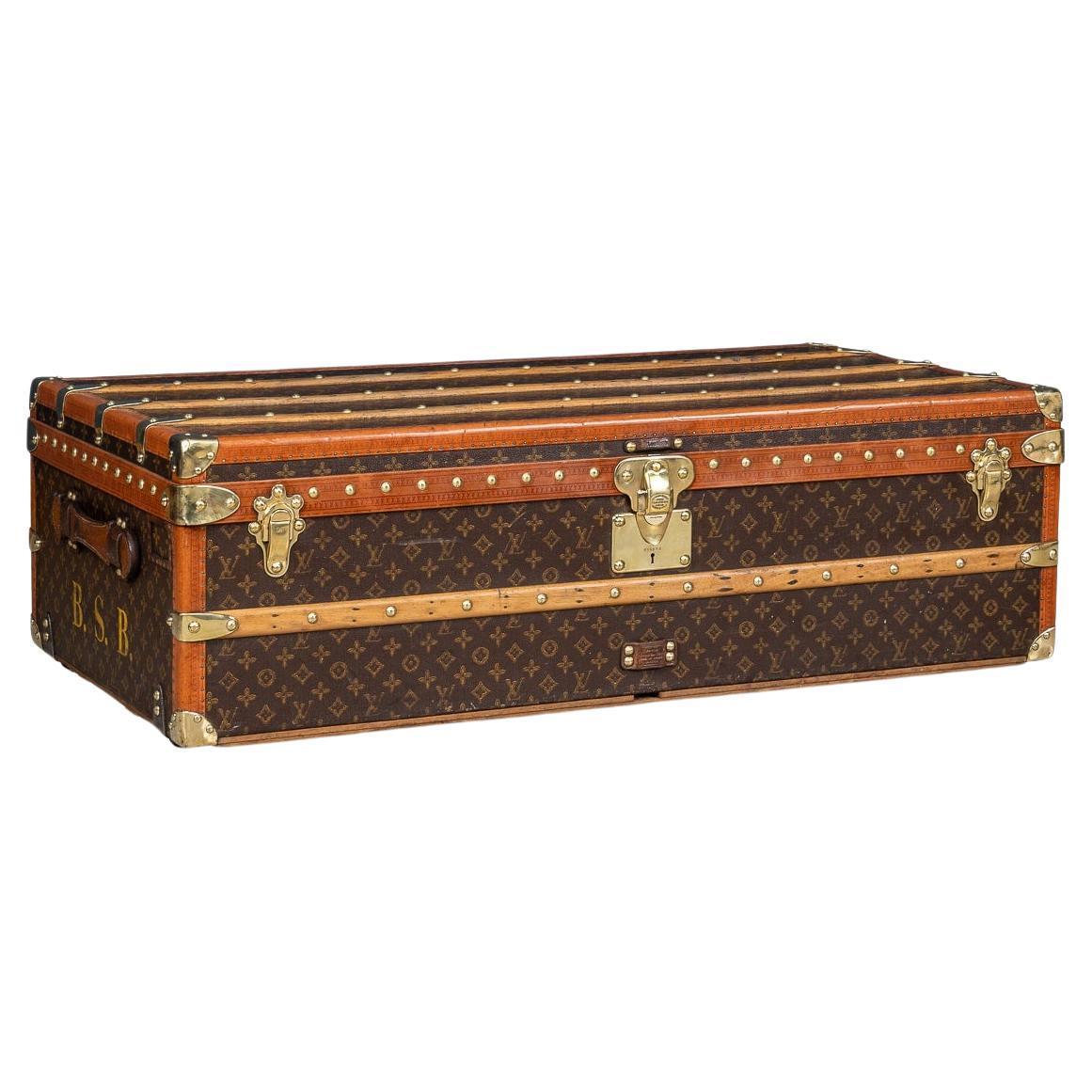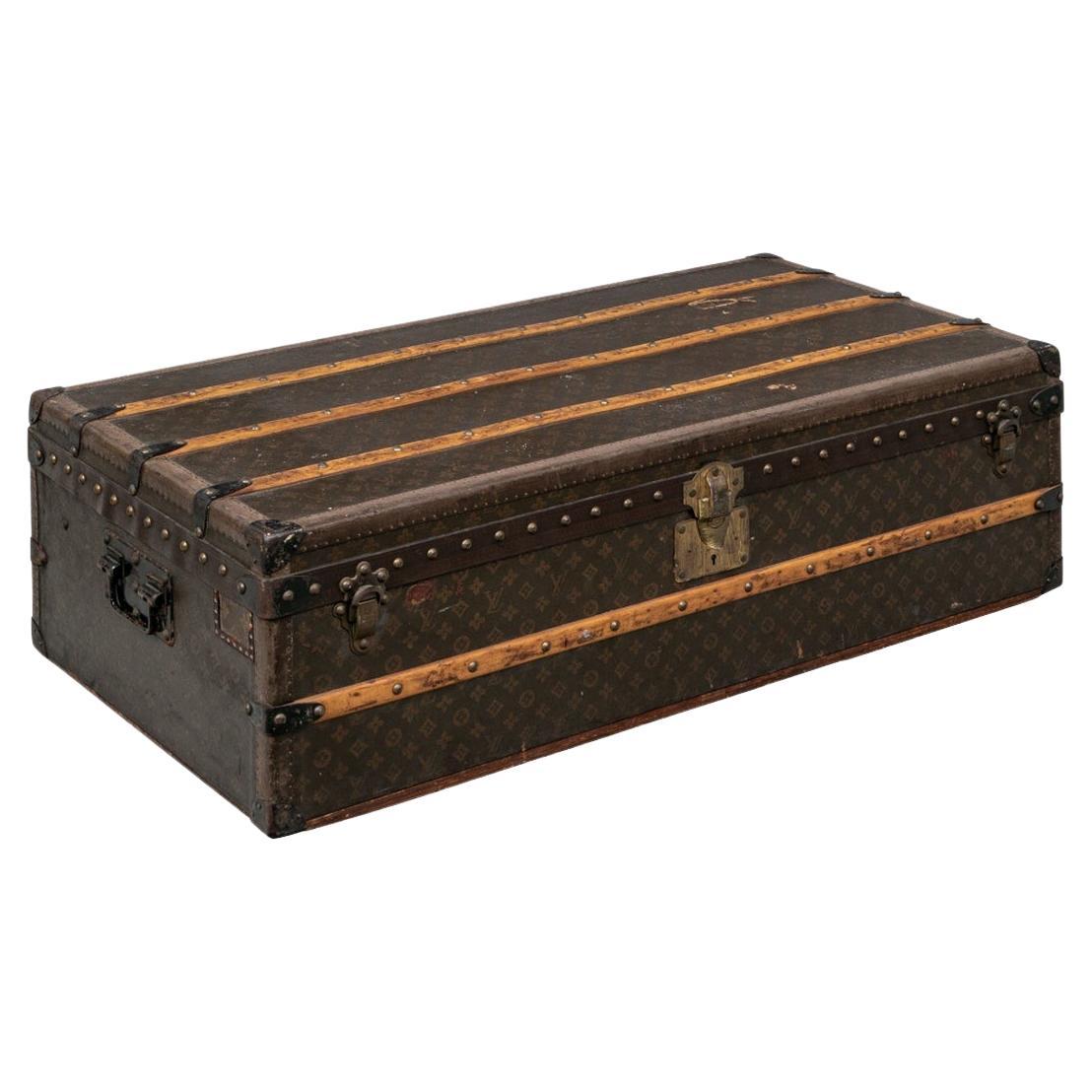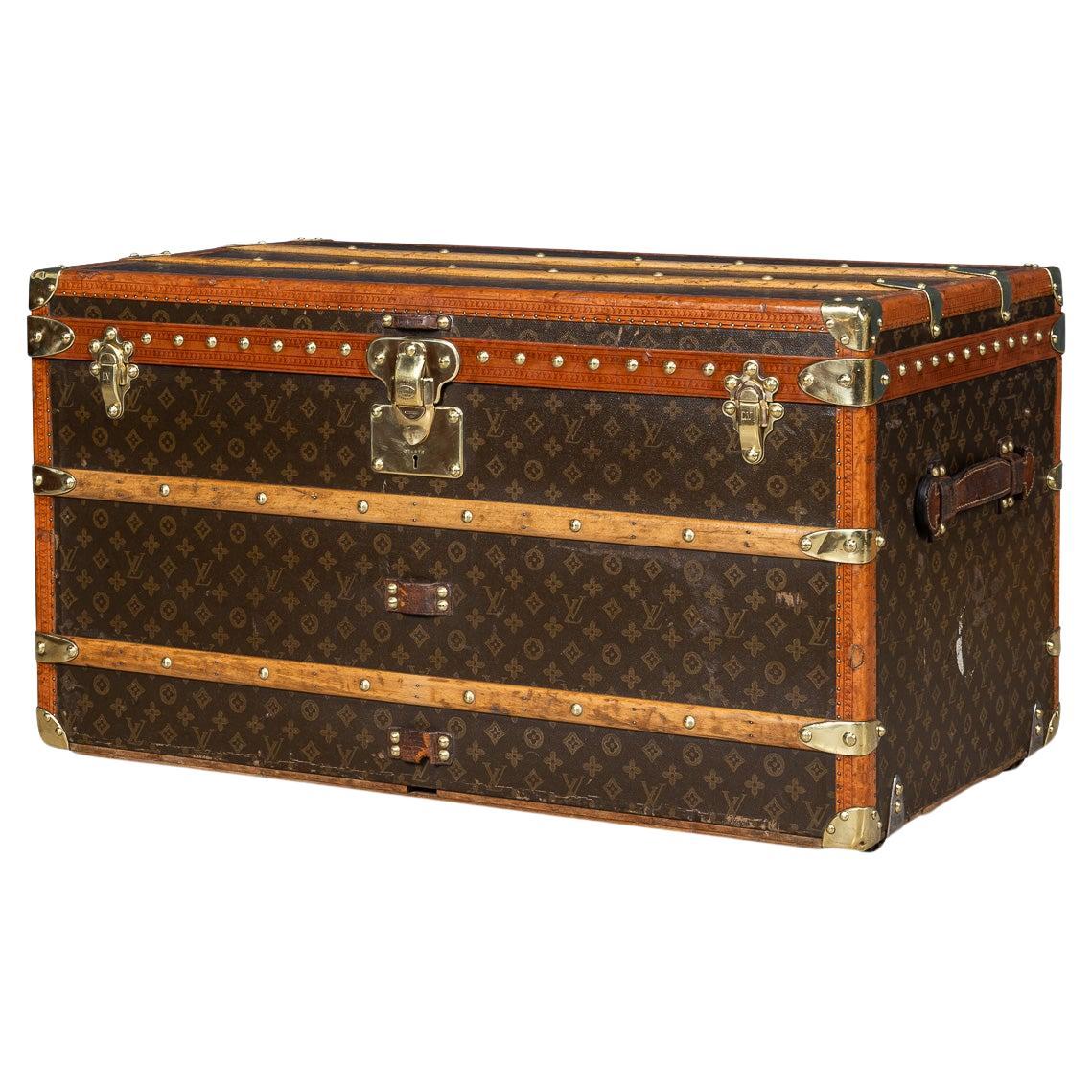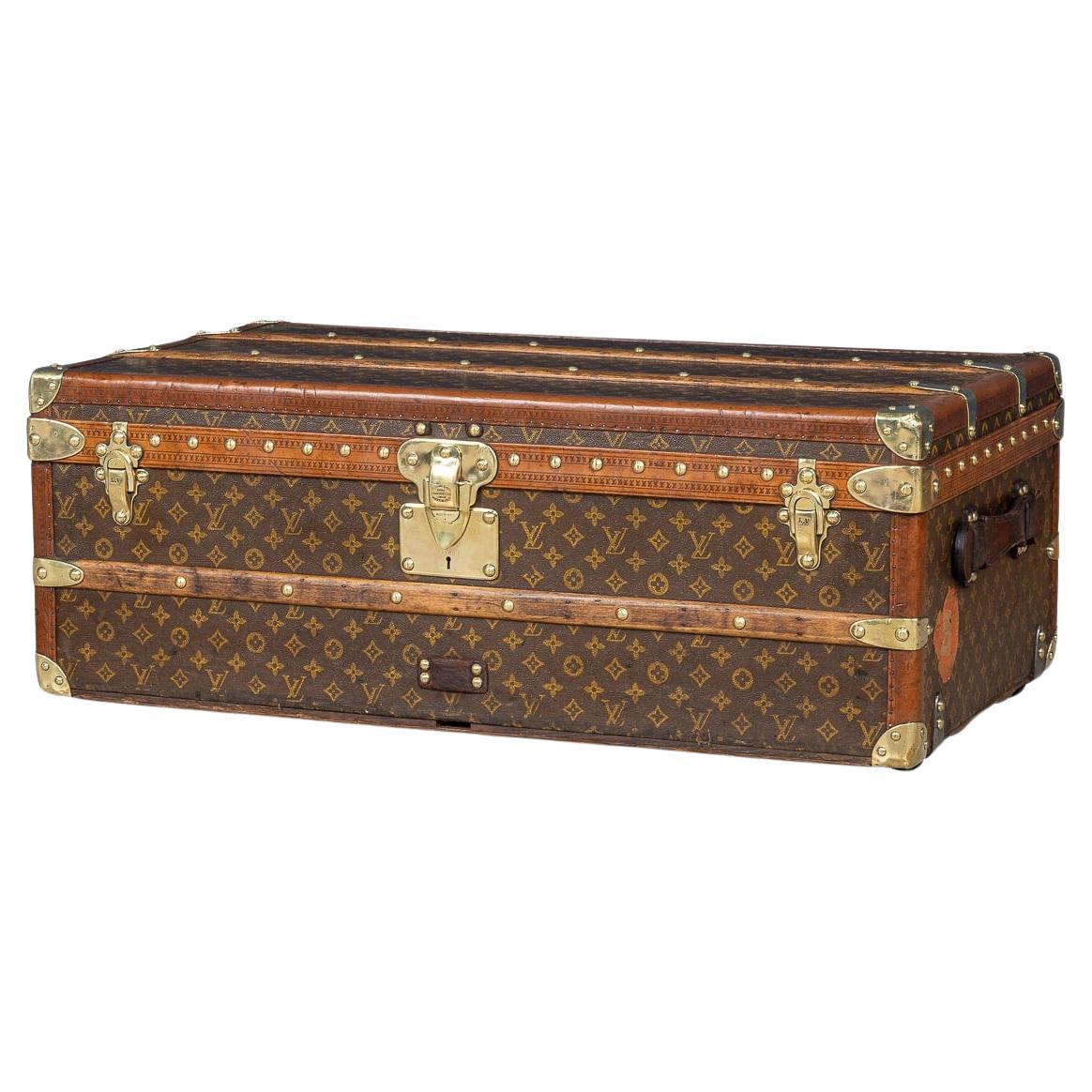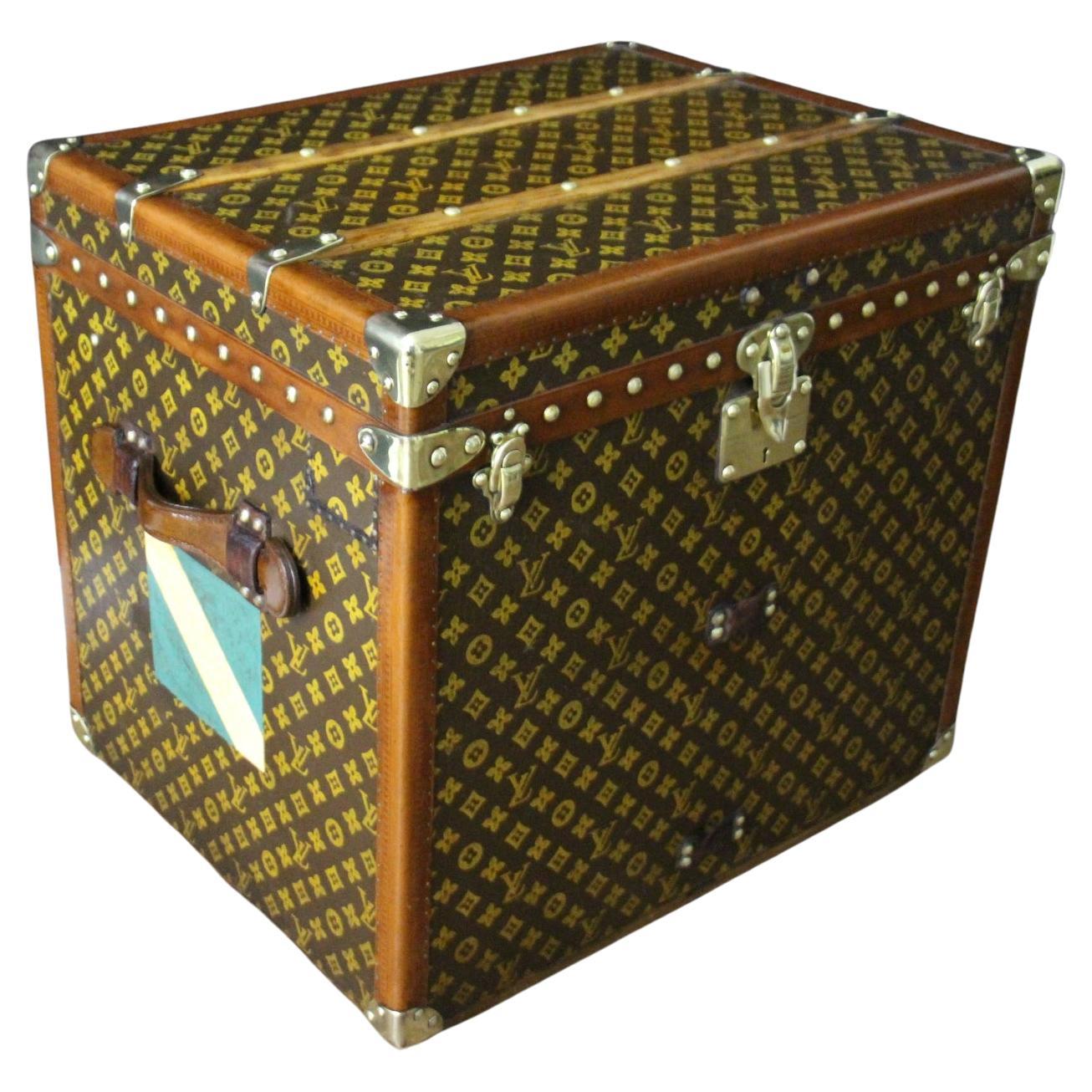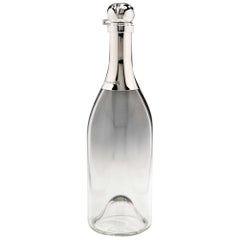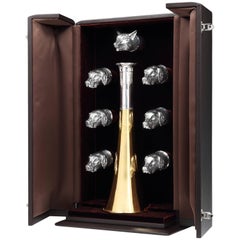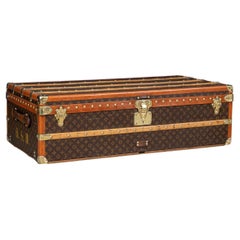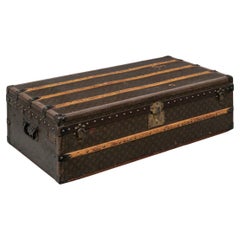
Louis Vuitton Wine Bottle Carrier, 1930s
View Similar Items
Louis Vuitton Wine Bottle Carrier, 1930s
About the Item
- Creator:Louis Vuitton (Maker)
- Dimensions:Height: 11.82 in (30 cm)Width: 13 in (33 cm)Depth: 5.12 in (13 cm)
- Style:Other (Of the Period)
- Materials and Techniques:
- Place of Origin:
- Period:
- Date of Manufacture:1930s
- Condition:Wear consistent with age and use. Good, original condition.
- Seller Location:London, GB
- Reference Number:Seller: 60741stDibs: LU86803486202
Louis Vuitton
The story behind iconic luxury brand Louis Vuitton — best known for its esteemed handbags, crossbody bags, leather goods, ready-to-wear clothing and more — is one of craft and innovation in the worlds of fashion, jewelry and furniture.
The company’s modest origins can be traced back to when its founder, Louis Vuitton (1821–92), wishing to free himself from the conventional lifestyle in his provincial French city of Anchay as well as a difficult stepmother, left in the early 1830s to make a new life in Paris. The young Vuitton was 13 at the time and would need to travel on foot to get to the capital, which was hundreds of miles away. With stops along the way to make money so that he could forge ahead, the journey took a couple of years, but reward was close at hand.
When he arrived in Paris, Vuitton made a living with his hands. He toiled as a box maker and packer for more than a decade and built relationships with royals and members of the upper class while working for the empress of France, Eugenie de Montijo. In 1854, Vuitton launched his namesake company. The craftsman opened a humble workshop on rue Neuve des Capucines and advertised his services with a small poster that read: “Securely packs the most fragile objects. Specializing in packing fashions.”
Long before his brand would become known globally for its exemplary top-handle bags and stylish totes, Vuitton produced stackable and rectangular trunks. The most common trunks of the era were round, which weren’t ideal for toting and storing. In 1858, Vuitton debuted his lightweight, handcrafted canvas trunks, which were sturdy, rugged and equipped with convenient compartments. Travel’s popularity broadened in the late 19th century, and Vuitton’s trunks could easily be packed into train cars and ships — upright trunks meant hanging wardrobe storage that would allow his clients to transport their sophisticated garments without worry. Demand increased and the company grew. When Louis Vuitton died in 1892, control of the luxury house was passed onto his only son, Georges Vuitton.
In 1914, a Louis Vuitton store opened at 70 Champs-Élysées. The largest travel-goods store in the world at the time, it became the company’s flagship.
The Louis Vuitton brand embodies all the attributes of luxury, from the craftsmanship, exclusivity and relevance to heritage. It’s only appropriate that it boasts one of the most recognizable insignias — the imaginative interlocking of letters and fleurettes — in the fashion world. The famous LV monogram was first used in 1896 as part of an initiative by Georges to prevent counterfeiting of his coveted new line of travel trunks. It’s one of the earliest examples of fashion branding.
The LV monogram would soon appear on everything from bags and various fashion accessories to alligator-skin champagne cases, from stylish apparel and earrings to teddy bears and airplane models.
On 1stDibs, the unmistakable insignia can be found on both modern and vintage Louis Vuitton shoulder bags, suitcases, original 19th-century trunks, jackets and more.
- Sterling Silver Hand Blown 'Champagne Magnum' Wine Decanter, Hallmarked, 2016By Pullman Editions Ltd.Located in London, GBAn unusual, sterling silver mounted wine decanter in the form of a Champagne magnum, in hand blown glass with a sterling silver ‘neck’ and hinged cap in the form of a Champagne cork, which lifts to reveal a glass stopper beneath. Modelled on the English decanters of the late 1800s, of similar form and slightly more robust form. Designed by Pullman Gallery...Category
21st Century and Contemporary British Art Deco Barware
MaterialsSterling Silver
- Sterling Silver Garrard & Co Winston Churchill Set, 1974By Garrard & Co. Ltd.Located in London, GBGarrard & Co, a very stylish, modernist style sterling silver pitcher and goblet set designed for Garrard by Alex George Styles in collaboration with John Churchill in 1974, as p...Category
Vintage 1970s Other Barware
MaterialsSilver, Sterling Silver
- Goldsmiths & Silversmiths 'Hunting' Drinks Set, 1920sBy Goldsmiths & Silversmiths Co. Ltd.Located in London, GBAn impeccable and unique sterling silver drinks set with a hunting theme, featuring a large cocktail shaker in the form of a hunting horn as the centre-piece. The shaker, partly lemo...Category
Vintage 1920s British Other Barware
MaterialsSterling Silver
$60,978 Sale Price / set20% Off - 'Artillery Shell' Cocktail Shaker Sets by Gorham, USABy Gorham Manufacturing CompanyLocated in London, GBGorham, USA A complete pair of 'Artillery Shell' cocktail shakers by American maker Gorham, in copper, brass and silver plate, made to resemble 18lb artillery shells. The top section is the cocktail shaker, with pull-off cap for filling with an integral strainer. The heavy base in polished brass, and houses a pull-out silver-plated framework for four clear glass shot glasses...Category
Early 20th Century American Other Barware
MaterialsCopper, Brass, Silver Plate
$17,934 Sale Price / set20% Off - Hammered Sterling Silver Champagne Goblets by Buccellati, circa 1990sBy BuccellatiLocated in London, GBBuccellati, Italy. A set of eight handmade Sterling silver stemmed Champagne or wine goblets by Buccellati, each goblet with a plain, swept foot and the bowl in a hammered or mart...Category
1990s Italian Other Barware
MaterialsSterling Silver
- Gentleman's Sterling Silver 'World Tour' Hipflask, 1879By Alexander Clark & Co.Located in London, GBA highly unusual sterling silver gentleman’s hipflask of oval form, with a hinged, bayonet cap, the body is profusely engraved with the route the o...Category
Antique 1870s British Other Barware
MaterialsSterling Silver
- 20th Century Louis Vuitton Trunk, France c.1930By Louis VuittonLocated in Royal Tunbridge Wells, KentAn exquisite and complete Louis Vuitton trunk from the early part of the 20th century. An absolutely essential item for elite travellers of its time the trunk is adorned in the iconic LV monogrammed canvas, accented by lozine trim and brass fittings. This trunk stood as the epitome of luxury over 100 years ago, boasting an unparalleled level of sophistication and elegance, it remains a timeless masterpiece that transcends eras. The captivating allure of the Louis Vuitton trunk transforms it into more than a mere luggage accessory; it becomes a focal point for any room. With its impressive dimensions, it is perfectly suited as a striking coffee table, side table, or even as a standalone centrepiece, seamlessly integrating into any interior, whether modern or traditional. An extraordinary piece that not only pays homage to the past but also serves as a statement of unparalleled luxury in the present. A brief history about Louis Vuitton trunks: Louis Vuitton was born in 1821 to a farmer and milliner and came from a long-established working-class family in eastern France. Vuitton grew up understanding the effects of perseverance and a strong work ethic from watching his family. At the age of 16, he made the decision to walk 292 miles from his hometown to Paris to try and make a new life for himself. When he arrived the city was in the midst of industrialization with current modes of transportation evolving quickly allowing for longer journeys. With this came the need for sturdy travel pieces. Vuitton was taken as an apprentice for a successful box maker and packer named Monsieur Marechal. He learned to craft durable containers and how to pack them properly – a well-respected profession at the time.In 1854, years after he had mastered his craft and became well respected for it, Vuitton ventured out on his own to open a shop on Rue Neuve des Capucines. It was here that he began to establish himself as a luggage maker. Then, in 1858, Vuitton designed the first Louis Vuitton steamer trunk. At the time trunks had rounded tops to allow for water to run off but this did not allow for convenient stowage. Vuitton introduced a flat, yet waterproof, trunk that was easily stackable. The first of his trunks were outfitted with a grey canvas referred to as Trianon – it wouldn’t be until several decades later that the signature monogram would be introduced. With a burgeoning business, Vuitton moved his family and workplace to Asniere, where he employed twenty workers to craft his trunks. By 1900 he would have 100 employees, and in 1914 the company would more than double in size. After years of success, Vuitton began to experiment with the design of his luggage by introducing a new striped canvas pattern (1876) and later the still well-known Damier print (1888). The hand-painted patterns were developed to prevent counterfeits. Even in the late 1800s, Louis Vuitton was enough of a status symbol to warrant counterfeiting. In 1886, his son George invented and patented an ingenious locking system that made it impossible to pick the lock of their trunks. This lock is still used today. 1892 would prove to be a time of mourning for the family as Louis Vuitton passed...Category
20th Century French Other Trunks and Luggage
MaterialsBrass
- 20th Century Louis Vuitton Trunk, France c.1930By Louis VuittonLocated in Royal Tunbridge Wells, KentAn exquisite and complete Louis Vuitton trunk from the early part of the 20th century. An absolutely essential item for elite travellers of its time the trunk is adorned in the iconi...Category
20th Century French Other Trunks and Luggage
MaterialsBrass
- 1930’s Louis Vuitton Monogram Cabin TrunkBy Louis VuittonLocated in Bridgeport, CTA well worn and well-used Vuitton Cabin Trunk from the Golden Age of Travel bearing the marks, tears and losses of a well-travelled piece. Worn label insi...Category
Vintage 1930s European Hollywood Regency Trunks and Luggage
MaterialsBrass
- 20th Century Louis Vuitton Shoe Trunk, France c.1930By Louis VuittonLocated in Royal Tunbridge Wells, KentA magnificent and exceptionally rare Louis Vuitton shoe trunk, adorned with stencilled monogram canvas, lozine trim and brass fittings. Elevating its uniqueness is the remarkably uncommon size that distinguishes it from standard models. This extraordinary piece measures an impressive 90cm in length, an astounding 50% wider than the already scarce shoe trunks typically encountered. Dating back to the first half of the 20th century, this trunk was an indispensable possession for discerning elite travellers, evoking the grandeur of passenger ships and the first-class luxury of bygone eras. Designed with the utmost attention to detail, this rare find is equipped with its original lift-out trays, showcasing the timeless craftsmanship that has come to define Louis Vuitton...Category
20th Century French Other Trunks and Luggage
MaterialsBrass
- 1920's-1930's Louis Vuitton Trunk in Monogram, 80 cm Louis Vuitton Steamer TrunkBy Louis VuittonLocated in Saint-Ouen, FRThis superb Louis Vuitton steamer trunk features stenciled monogram canvas, deep chocolate color leather trim, LV stamped solid brass locks and studs as well as solid brass side hand...Category
Vintage 1920s French Trunks and Luggage
MaterialsBrass
- 20th Century Louis Vuitton Trunk In Monogram Canvas, France c.1930By Louis VuittonLocated in Royal Tunbridge Wells, KentAn exquisite and complete Louis Vuitton trunk from the early part of the 20th century. An absolutely essential item for elite travellers of its time the trunk is adorned in the iconic LV monogrammed canvas, accented by lozine trim and brass fittings. This trunk stood as the epitome of luxury over 100 years ago, boasting an unparalleled level of sophistication and elegance, it remains a timeless masterpiece that transcends eras. The captivating allure of the Louis Vuitton trunk transforms it into more than a mere luggage accessory; it becomes a focal point for any room. With its impressive dimensions, it is perfectly suited as a striking coffee table, side table, or even as a standalone centrepiece, seamlessly integrating into any interior, whether modern or traditional. An extraordinary piece that not only pays homage to the past but also serves as a statement of unparalleled luxury in the present. A brief history about Louis Vuitton trunks: Louis Vuitton was born in 1821 to a farmer and milliner and came from a long-established working-class family in eastern France. Vuitton grew up understanding the effects of perseverance and a strong work ethic from watching his family. At the age of 16, he made the decision to walk 292 miles from his hometown to Paris to try and make a new life for himself. When he arrived the city was in the midst of industrialization with current modes of transportation evolving quickly allowing for longer journeys. With this came the need for sturdy travel pieces. Vuitton was taken as an apprentice for a successful box maker and packer named Monsieur Marechal. He learned to craft durable containers and how to pack them properly – a well-respected profession at the time.In 1854, years after he had mastered his craft and became well respected for it, Vuitton ventured out on his own to open a shop on Rue Neuve des Capucines. It was here that he began to establish himself as a luggage maker. Then, in 1858, Vuitton designed the first Louis Vuitton steamer trunk. At the time trunks had rounded tops to allow for water to run off but this did not allow for convenient stowage. Vuitton introduced a flat, yet waterproof, trunk that was easily stackable. The first of his trunks were outfitted with a grey canvas referred to as Trianon – it wouldn’t be until several decades later that the signature monogram would be introduced. With a burgeoning business, Vuitton moved his family and workplace to Asniere, where he employed twenty workers to craft his trunks. By 1900 he would have 100 employees, and in 1914 the company would more than double in size. After years of success, Vuitton began to experiment with the design of his luggage by introducing a new striped canvas pattern (1876) and later the still well-known Damier print (1888). The hand-painted patterns were developed to prevent counterfeits. Even in the late 1800s, Louis Vuitton was enough of a status symbol to warrant counterfeiting. In 1886, his son George invented and patented an ingenious locking system that made it impossible to pick the lock of their trunks. This lock is still used today. 1892 would prove to be a time of mourning for the family as Louis Vuitton passed...Category
20th Century French Other Trunks and Luggage
MaterialsBrass
Recently Viewed
View AllRead More
How to Spot a Fake Louis Vuitton
What are the telltale signs that you're holding a real Louis Vuitton and not a knockoff? We spoke with expert Diane D’Amato to find out. Of course, you don't have to worry about fakes on 1stDibs, where every seller is highly vetted.
Inside Louis Vuitton’s Most Popular Handbag Collaborations
The venerable brand has earned accolades (and gained new fans) for partnerships that meld fashion with art.
